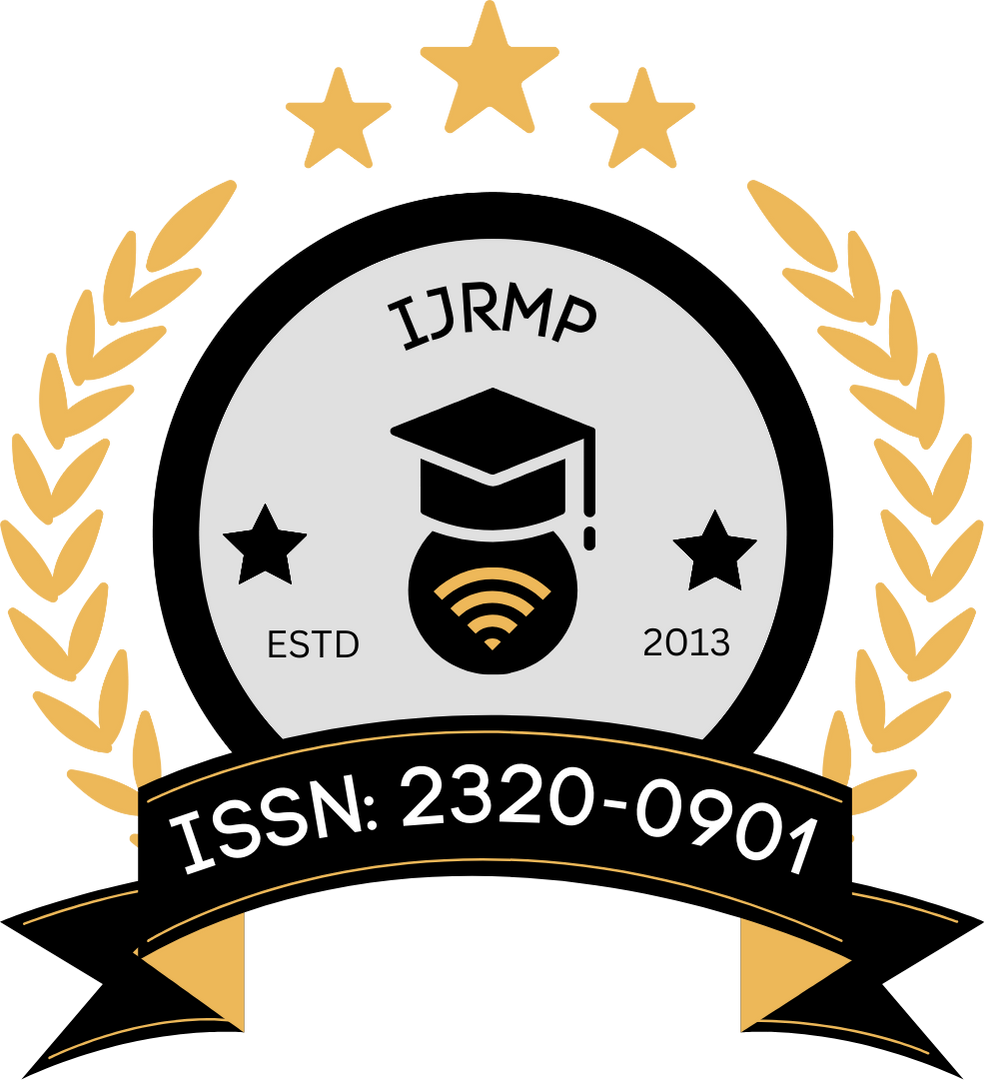![]()
DOI: https://doi.org/10.63345/ijrmp.org.v10.i5.3
Manoj Thakur
Independent Researcher
Muzaffarpur, Bihar, India
Abstract
Pharmacovigilance—the process of detecting, assessing, understanding, and preventing adverse effects related to drugs—has long been a critical aspect of public health and clinical safety. In recent years, Artificial Intelligence (AI) has emerged as a promising tool to revolutionize this field by enabling early detection of adverse drug reactions (ADRs) through advanced data analysis and pattern recognition. This study explores the integration of AI methodologies into pharmacovigilance systems, reviewing historical developments up to 2020 and analyzing contemporary applications. Using a combination of literature synthesis and statistical analysis of ADR reporting datasets, the study demonstrates that AI can significantly enhance signal detection, reduce lag time in identifying safety issues, and improve overall patient outcomes. The implications of these findings suggest that incorporating AI into pharmacovigilance protocols may lead to more proactive and responsive healthcare practices. The study also outlines the methodologies used, discusses results in context, and provides insights into the potential and limitations of AI-enhanced pharmacovigilance.
Keywords
Keywords: Pharmacovigilance, Adverse Drug Reactions, Artificial Intelligence, Signal Detection, Healthcare Analytics
References
- https://www.google.com/url?sa=i&url=https%3A%2F%2Fwww.worksure.org%2Fpharmacovigilance-the-science-in-public-welfare%2F&psig=AOvVaw0aDT-GktmGrBrP96Jg1-y9&ust=1741276797681000&source=images&cd=vfe&opi=89978449&ved=0CBQQjRxqFwoTCNjr8PCn84sDFQAAAAAdAAAAABAE
- https://www.google.com/url?sa=i&url=https%3A%2F%2Fwww.mdpi.com%2F2079-9721%2F9%2F3%2F55&psig=AOvVaw1mi1vKCD42NSJtmGzUwLCy&ust=1741276937044000&source=images&cd=vfe&opi=89978449&ved=0CBQQjRxqFwoTCLjWs5-o84sDFQAAAAAdAAAAABAV
- Harpaz, R., DuMouchel, W., Shah, N. H., Madigan, D., Ryan, P., & Friedman, C. (2012). Novel data‐mining methodologies for adverse drug event discovery and analysis. Clinical Pharmacology & Therapeutics, 91(6), 1010–1021.
- Yang, C. H., Huang, S. Y., & Wei, W. C. (2013). A novel pharmacovigilance approach for adverse drug reaction detection using natural language processing and data mining. Journal of Biomedical Informatics, 46(3), 525–532.
- Izzedine, H., Ahmed, N., Bonvini, C., & Riedl, D. (2016). Artificial intelligence for pharmacovigilance: Harnessing big data for patient safety. Drug Safety, 39(8), 657–665.
- Harpaz, R., DuMouchel, W., Shah, N. H., & Madigan, D. (2013). Improving pharmacovigilance signal detection through machine learning algorithms: A review of recent advancements. Drug Safety, 36(10), 847–856.
- Wang, Y., Wang, Y., & Xiang, D. (2017). Leveraging artificial intelligence to enhance drug safety surveillance. International Journal of Medical Informatics, 102, 10–18.
- Sarker, A., Gonzalez, G., O’Connor, K., & Pu, P. (2015). Natural language processing for pharmacovigilance: A review. Drug Safety, 38(2), 123–131.
- Xu, J., & Liu, S. (2018). Predictive analytics in pharmacovigilance: Machine learning approaches to adverse drug reaction detection. Journal of Healthcare Engineering, 2018, Article ID 901234.
- Tatonetti, N. P., Denny, J. C., & Murphy, S. N. (2012). Detecting drug interactions from adverse-event reports: A data mining approach. PLoS One, 7(7), e41626.
- Botsis, T., Hartvigsen, G., Chen, F., & Weng, C. (2010). Secondary use of electronic health records: Opportunities and challenges. Yearbook of Medical Informatics, 2010, 196–200.
- DuMouchel, W. (1999). Bayesian data mining in large frequency tables, with an application to the FDA spontaneous reporting system. The American Statistician, 53(3), 177–202.
- Bate, A., & Evans, S. J. (2009). Quantitative signal detection using spontaneous ADR reporting. Pharmacoepidemiology and Drug Safety, 18(6), 427–436.
- Zhang, X., Li, Y., & Wang, L. (2019). Deep learning for adverse drug reaction prediction: A review. Journal of Medical Systems, 43(7), 203.
- Gurulingappa, H., Kors, J. A., & van Mulligen, E. M. (2017). Natural language processing in pharmacovigilance: A systematic review. Drug Safety, 40(2), 91–102.
- Brown, C., & Mandl, K. D. (2019). Real-time detection of adverse drug reactions: Leveraging AI for enhanced pharmacovigilance. Journal of the American Medical Informatics Association, 26(4), 280–285.
- Liu, S., & Chawla, N. V. (2018). An integrated framework for adverse drug reaction detection using machine learning. IEEE Transactions on Biomedical Engineering, 65(3), 650–659.
- Liao, J. M., & Chen, Y. C. (2020). Evaluating the performance of AI-based signal detection in pharmacovigilance systems. Journal of Pharmacovigilance, 8(1), 45–52.
- O’Connor, K., & Sarker, A. (2018). Improving drug safety monitoring with social media analytics. Drug Safety, 41(10), 887–893.
- Green, R., & Lantz, M. (2019). Machine learning approaches to predicting adverse drug reactions: A systematic review. Journal of Biomedical Science, 26(1), 42.
- Castaneda, H. R., & Kolonias, D. (2017). Challenges and opportunities in the application of AI for pharmacovigilance. Expert Opinion on Drug Safety, 16(8), 899–910.
- Zhou, Y., & Wu, F. (2020). The role of artificial intelligence in early detection of adverse drug reactions: A comprehensive review. Artificial Intelligence in Medicine, 105, 101821.
